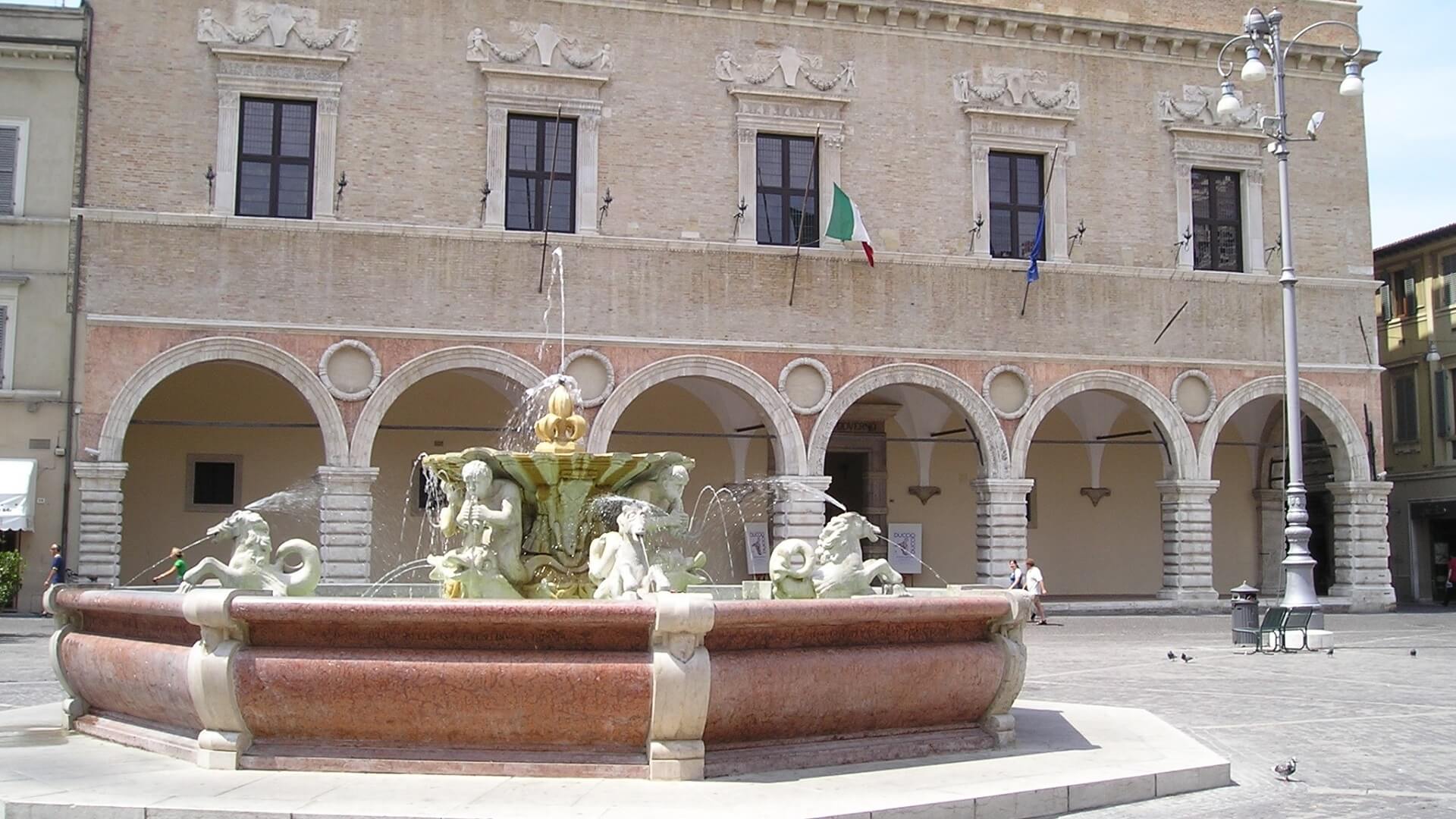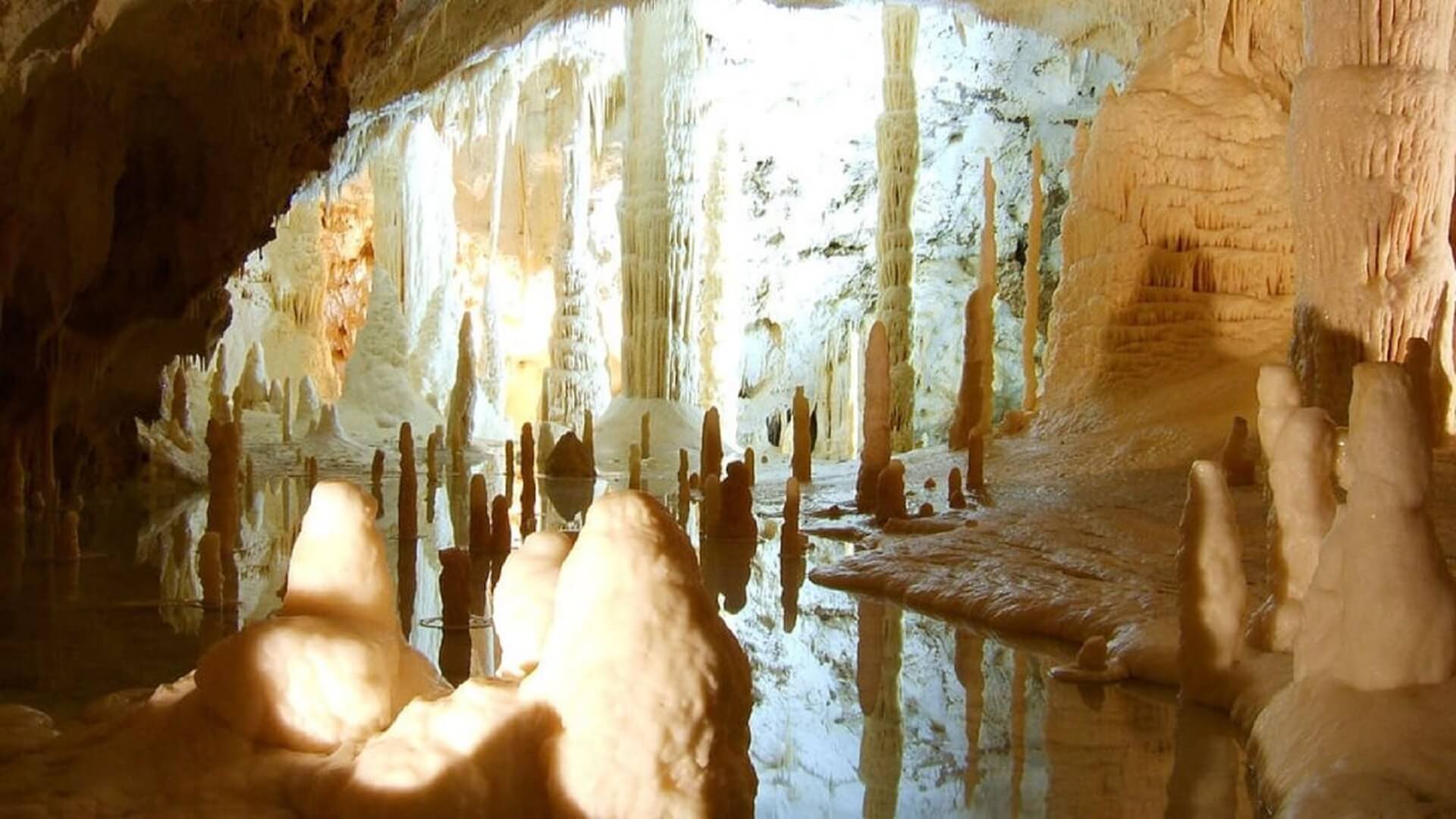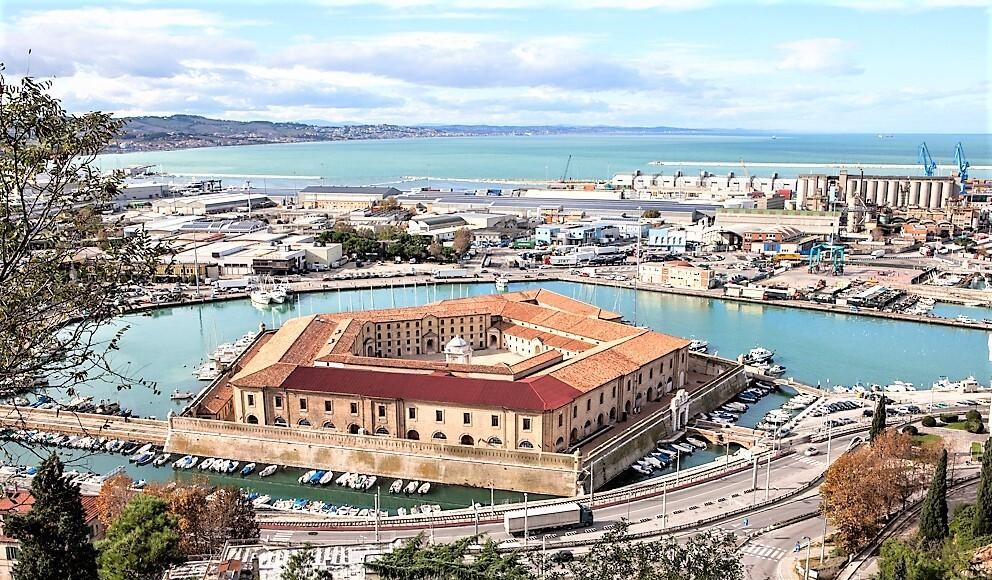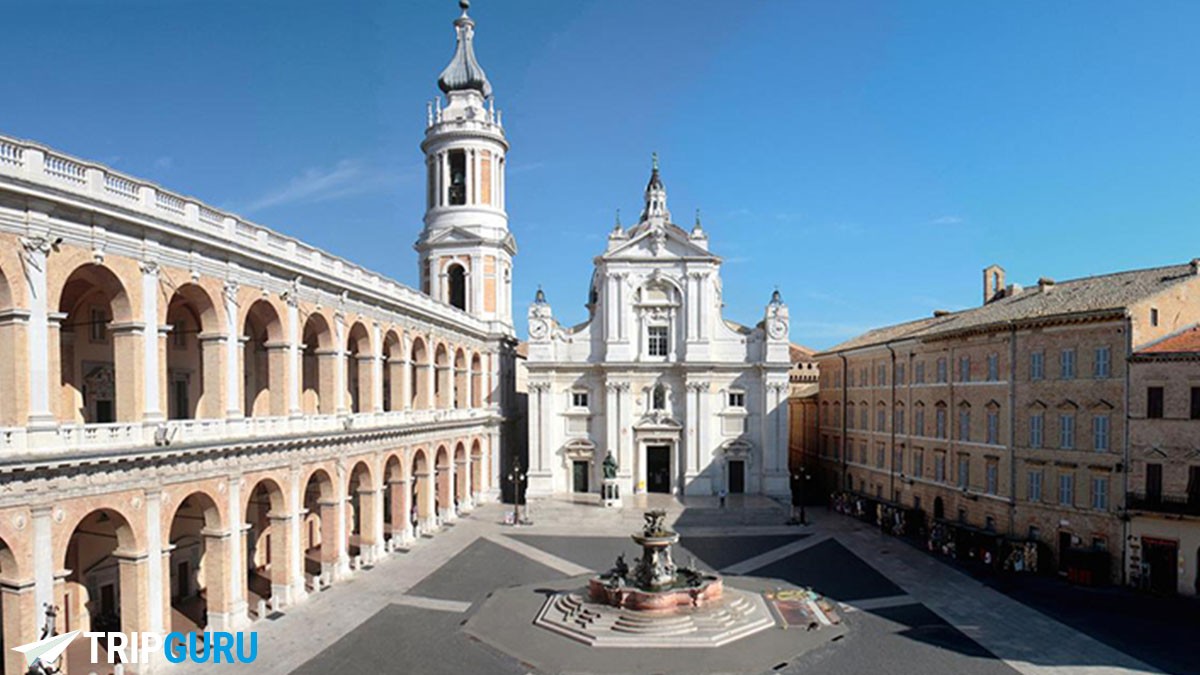
Urbino is situated between the valleys of the Metauro and Foglia rivers. Its historic centre now boasts the honour of being included in the UNESCO list of World Heritage Sites. It is birthplace of two great artists, Bramante and Raphael, and it is home to one of the oldest and most important universities in Europe, founded in 1506. For the second half of the 15th century its windy hill was the setting for one of the most illustrious courts in Europe. Duke Federico da Montefeltro gathered around him the greatest painters, poets and scholars of his day and housed them in one of Italy's most beautiful Renaissance palaces, a palace that still stands as an eloquent memorial to this quintessential Renaissance man. The Palazzo Ducale is a splendid late XV century residence, one of Italy's most beautiful Renaissance palaces, defined as "a city in the form of a palace", by humanist Baldesar. It was built by Luciano Laurana (1464-1472), who designed and carried out the main part of the building, like the Torricini façade, the Cortile D'Onore and the monumental series of steps. Urbino is the birthplace of Raphael, one of the most remarkable Renaissance artists. The house where he was born is now a delightful little museum. Further tourist attractions are: Oratorio S. Giovanni Battista entirely decorated in 1416 with wall-to-ceiling frescoes by the Marchegiani painters Jacopo and Lorenzo Salimbeni; Presepio or nativity scene of the Oratory of San Giuseppe by Federico Brandani; the elegant Cathedral with the nearby Albani Diocesan Museum; the Sanzio Theatre, built in the 19th century; the rarely visited but nevertheless delightful Orto Botanico. You can't miss: the Collegio Raffaello, founded by Pope Clement XI in the early eighteenth century, housing the town council hall, some offices of the Prefecture and the Cabinet Museum of Physics; the Albornoz Fortress, built in the second half of the fourteenth century by Cardinal Egidio Alvares de Albornoz.

Overlooking the Adriatic Sea, Pesaro, an attractive seaside resort, a thriving fishing port and an important manufacturing centre, is crossed by the Foglia river and is situated between two coastal hills: Mount Ardizio and Mount San Bartolo (which gives its name to the Monte San Bartolo Natural Park). The most remarkable religious buildings are: the Cathedral, built on the remains of a late Roman building, which boasts an interesting mosaic floor; the Church of St. Agostino, with its remarkable Venetian Gothic portal ; the Sanctuary of the Madonna delle Grazie, built in the thirteenth century by the Malatesta family and rebuilt in Baroque style. The most important monuments and museums are: the fifteenth-century squared Rocca Costanza, surrounded by a wide moat, formerly used as a prison; the Ducal Palace, now the seat of the Prefecture, built by Alessandro Sforza in the second half of the fifteenth century; the Oliveriano Archaeological Museum and the Civic Museums (including the Art Gallery with Giovanni Bellini’s masterpiece, Coronation of the Virgin, and the Museum of Ceramics). The city was once noted for its ceramic workshops that turned out the brightly painted earthenware known as majolica. Here you can browse through one of Italy's finest collections of Renaissance and baroque pottery, much of it striking for its spontaneous, almost modern, use of colour and design. Rossini's House, the modest house where Italy's great opera composer Gioachino Rossini was born in 1792, is now a small shrine/museum dedicated to the composer.

The Karstic underground Frasassi Caves are located inside the Regional Natural Park of Gola Rossa and Frasassi, in the Genga municipality. Here natural sculptures can be admired, consisting of calcareous stratifications built by water and rocks for 190 million years. The caves are a natural sequence of stalactites and stalagmites, and of crystal water ponds and pits: a fairy tale location for weddings and events to be celebrated within a fascinating, wonderful, unique frame.

The city of Ancona is located on the coast of central Adriatic on a promontory formed by the northern slopes of Monte Conero. The port of Ancona is one the most important ports on the Adriatic Sea: it’s a fishing, tourist, commercial and industrial port. The oldest part of town straddles Colle Guasco, the hill above the port. On its peak, stands Ancona's finest and most remarkable church, the Medieval Cathedral of San Ciriaco. There are different beaches near Ancona: Passetto is the “urban beach”, featuring white-grey color rocks and the so-called “grotte” (caves), that were carved by fishermen to provide shelters for their small-sized fishing boats. The bay of Portonovo is one of the prettiest white pebbled beach on the whole of the Northern Adriatic shore. The strand is split in two by the Fortino Napoleonico, a squat, blank-eyed fort built in 1808 by Napoleon's Italian Viceroy to fight off English ships. It is now a most singular hotel. At the end of the road, where the evergreen oaks that smother the mountain come down to the sea, stands the early Romanesque church of Santa Maria. Built between 1034 and 1048, its curious form is unique in Italy and looks as if it might be more at home in Normandy. “Della Vela” beach is a spectacular beach with a rock, shaped like a sail. It's a free public beach, at the very end of the south versant of the bay. The beach of Mezzavalle adds a touch of wilderness and scenery to the beauties of the bay. The most remarkable tourist attractions are: the Church of Santa Maria della Piazza, a masterpiece of Romanesque art, with its impressive facade ; the Arch of Trajan, a Roman arch erected in the first century A.D; the Church of San Francesco alle Scale, with its beautiful facade in Venetian Gothic style, the Mole Vanvitelliana, a former pentagonal fortress, built by Vanvitelli and now hosting shows, art exhibitiosn and concerts in summer time; the Loggia dei Mercanti, with its Venetian-Gothic facade; the terrific Fountain of Calamus or Tredici Cannelle, a regimented row of 13 masked spouts.

Just south of Ancona rises the solitary limestone peak of Monte Conero whose steep slopes slide down to the sea; the bay of Portonovo, protected by the Regional Park of Monte Conero, is one of the prettiest white pebbled beach on the whole of the Northern Adriatic shore. On the bay, often crowded, there are few restaurants with a breathtaking view balcony serving fish dishes. “Della Vela” beach is a spectacular beach with a rock, shaped like a sail. It's a free public beach, at the very end of the south versant of the bay. The beach of Mezzavalle adds a touch of wilderness and scenery to the beauties of the bay. Once in Ancona you can’t miss the two most typical and famous dishes : the Ancona stockfish (stoccafisso all’anconetana) and the “brodetto” (fish stew). A glass of Rosso Conero (local red wine) is recommended.

The town of Loreto developed around the famous Basilica that contains the “Santa Casa” (the Holy House of Nazareth) where, according to tradition, the Virgin Mary was born, lived and received the announcement of the miraculous birth of Jesus. Tradition says that, when in 1291 the Muslims finally expelled the Christians from Jerusalem and then tried to regain Nazareth, a group of angels took care of the House and, after some wanderings, spreading their wings took it to Loreto. For this reason, the Madonna of Loreto is venerated as the patroness of aviators. In 1469, on the initiative of the bishop of Recanati, Nicolò delle Aste and later with Pope Paul II, the first construction of the present basilica began, first with Gothic and later Renaissance forms. In 1586, Pope Sixtus V appointed Loreto to the diocese and the bronze statue designed by Antonio Calcagni and Tiburzio Vergelli, that is placed in all its majesty next to the entrance of the Basilica, was dedicated to him. The octagonal dome was the work of Giuliano da Sangallo and was built in the years 1499-1500. The statue of the Virgin Mary, made of embossed and gilded copper, is on the top of the dome’s lantern. Next to the white Istria stone facade, completed in 1587, stands the elegant bell tower (1750-55) by Luigi Vanvitelli. The shrine of the Holy House is positioned under the dome, faced with marble and with statues and reliefs, a masterpiece of 16th century sculpture. The highly evocative interior is a destination for pilgrims who come from all over the world to pray before the statue of the Black Madonna.

Macerata is known across the world for its annual open-air opera festival, taking place in its open-air Arena Sferisterio - a neo-classical arena erected by private subscription in the 1820's. Its centre was almost entirely built between the 16th and 19th centuries. The Renaissance two-tiered arcades of the Loggia dei Mercanti on central Piazza della Liberta' is the town's most striking piece of architecture. The best of the city's palaces line Corso Matteotti, the road that leaves the square at the side of the Loggia, while Corso della Repubblica leads to Piazza Vittorio Veneto where stands Palazzo Ricci, which houses a collection of twentieth century Italian art. The Palazzo Buonaccorsi was built in 1700–1720 thanks to Raimondo Buonaccorsi and his son Cardinal Simone Buonaccorsi using designs by Giovanni Battista Contini. Macerata boasts a very old University, which was founded in 1290. In the historic center there are nice buildings : the Town Hall, the neoclassical facade on which it was placed, in 1952, the image of Our Lady of Mercy with the inscription Civitas Mariae; the Church of San Paolo, built between between 1623 and 1655; the 64 meters high Civic Tower, from whose terrace you can enjoy a panorama that sweeps from the Sibillini Mountains to the Adriatic Sea; the eighteenth-century Teatro Lauro Rossi, the nearby Basilica of Mercy, full of stuccos and marble; the Church of St. Mary the Virgin, boasting an "Epiphany" by Tintoretto.

Fermo is situated on the slopes of Sabulo Hill (319 above sea level). The city is now divided into two parts: the old town, that has remained almost intact through the centuries, and the new area. The heart of the town is the magnificent Renaissance Piazza del Popolo, formerly Piazza Grande, where there is the sixteenth century Palazzo dei Priori, whose main entrance is topped by Sansovino's grand statue of the Bishop of Fermo who was to become Pope Sixtus V. Now it is home to the Municipal Art Gallery, boasting valuable paintings of the Venetian and Marche schools and the "Nativity" by Rubens, and the Sala del Mappamondo (Hall of the Globe), taking its name from the world map drawn by the cartographer Moroncelli of Fabriano in 1713; the building also houses the archaeological section "From the Villanovians to Piceni"; further remarkable palaces surrounding the square are: the Palazzo degli Studi, housing the town library "Spezioli" with 400.000 volumes, and the Apostolic Palace, built in 1532 as the residence of the Governors and of the papal legates. Fermo's pride is also the prestigious "Teatro dell'Aquila", a fine example of eighteenth century architecture. Also worthy of note are the underground piscine romane (roman pools) which comprise thirty magnificently preserved underground chambers built between 41 & 60 BC to conserve and purify the town's water supply, and regarded as the finest example of their kind in Italy.

The enchanting town of Ascoli Piceno is one of the most important art towns in southern Marche and in central Italy. Travertine was widely used to pave the historic centre. Not to be missed is the unique main square Piazza del Popolo, with important buildings such as the medieval “Palazzo dei Capitani del Popolo”, the historic Cafè Meletti in Liberty style, the Church of San Francesco and the Merchant’s Lodge, an elegant 16th century building. The other major buildings stand at the centre of the most historic city, in Piazza Arringo: the Cathedral, where a polyptych with the Madonna and Saints by Carlo Crivelli is housed, the town hall or palazzo Comunale, the medieval Baptistery of St. Giovanni, the Cathedral of St. Emidius, whose crypt is dedicated to the local patron saint and houses the great polyptich of St. Emidio dated 1473 and signed by Carlo Crivelli, the Bishops’ Palace, the Arengo Palace, seat of the Pinacoteca Civica, Ascoli's art gallery, where, among other works of art, worth mentioning is the 13thC cope (piviale) of Pope Nicholas IV, an impressive piece of embroidery work made in England. On the other side of the square appears the 17th century façade of Palazzo Panichi, seat of the Archeological National Museum.

